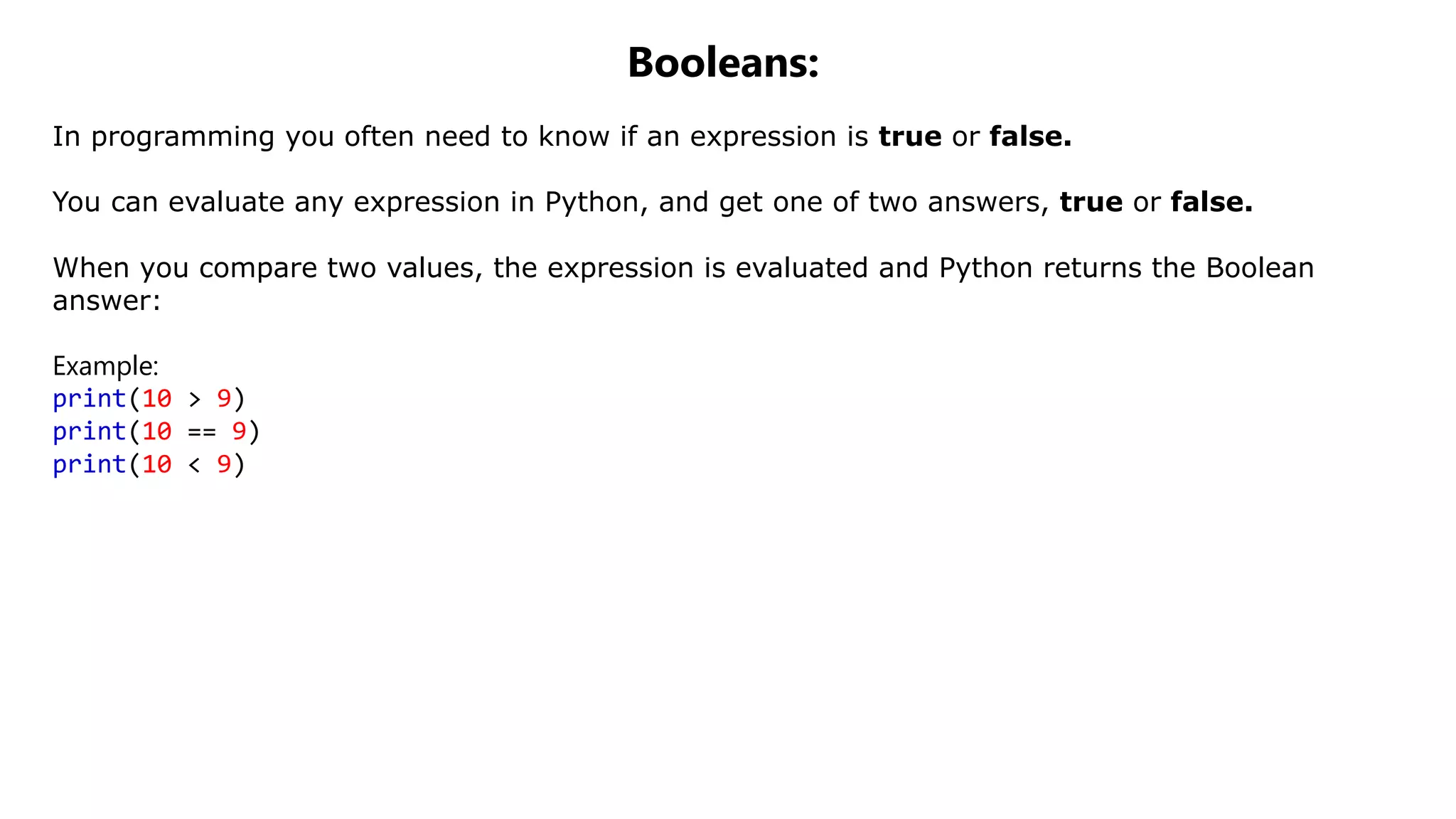This document provides an introduction to Python programming. It discusses the history and origins of Python, why it is useful for programming, its core features like object-oriented programming and indentation, basic syntax like variables, data types, and keywords. It also covers strings, booleans, and how to assign values and combine text in strings.
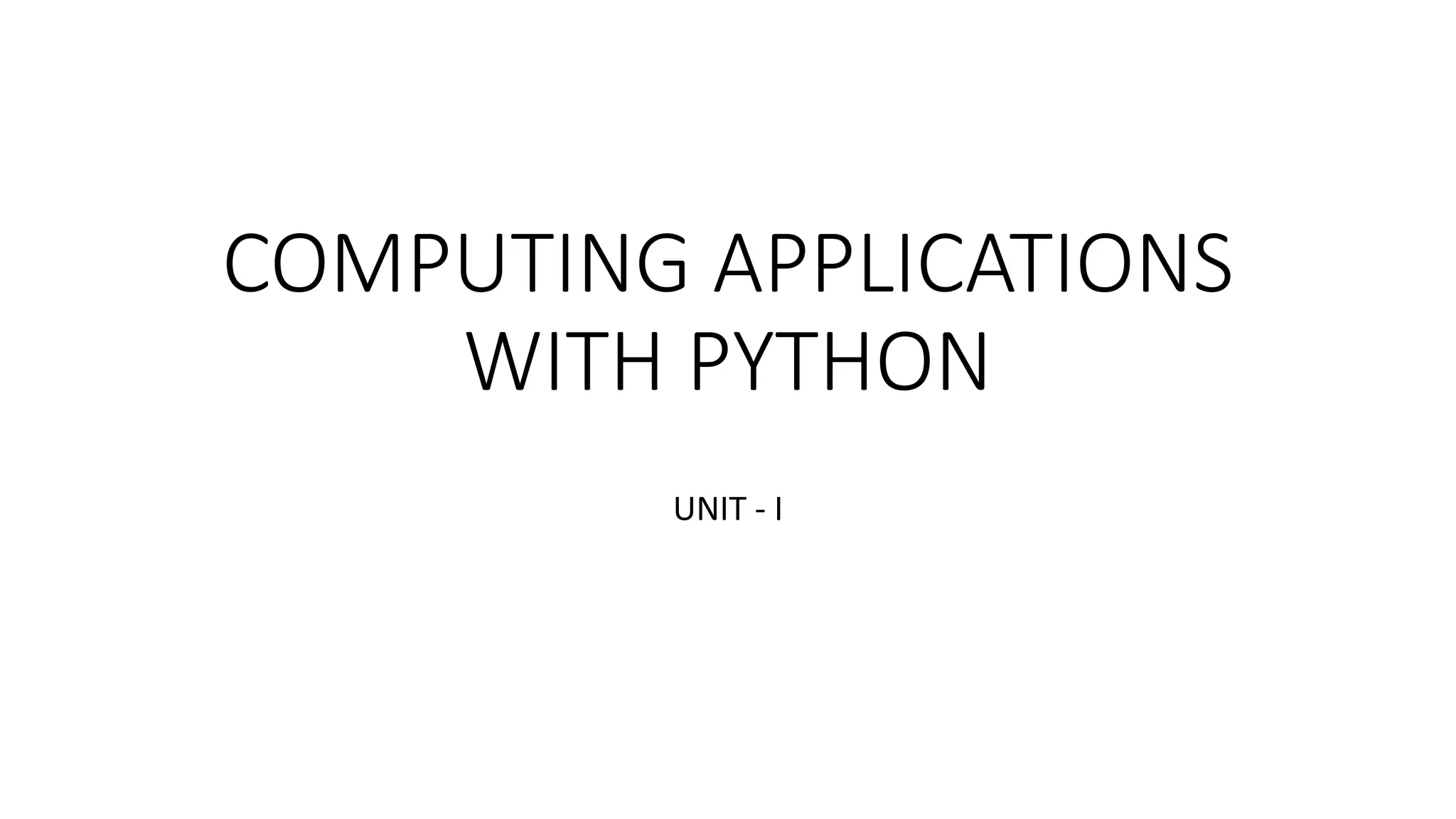
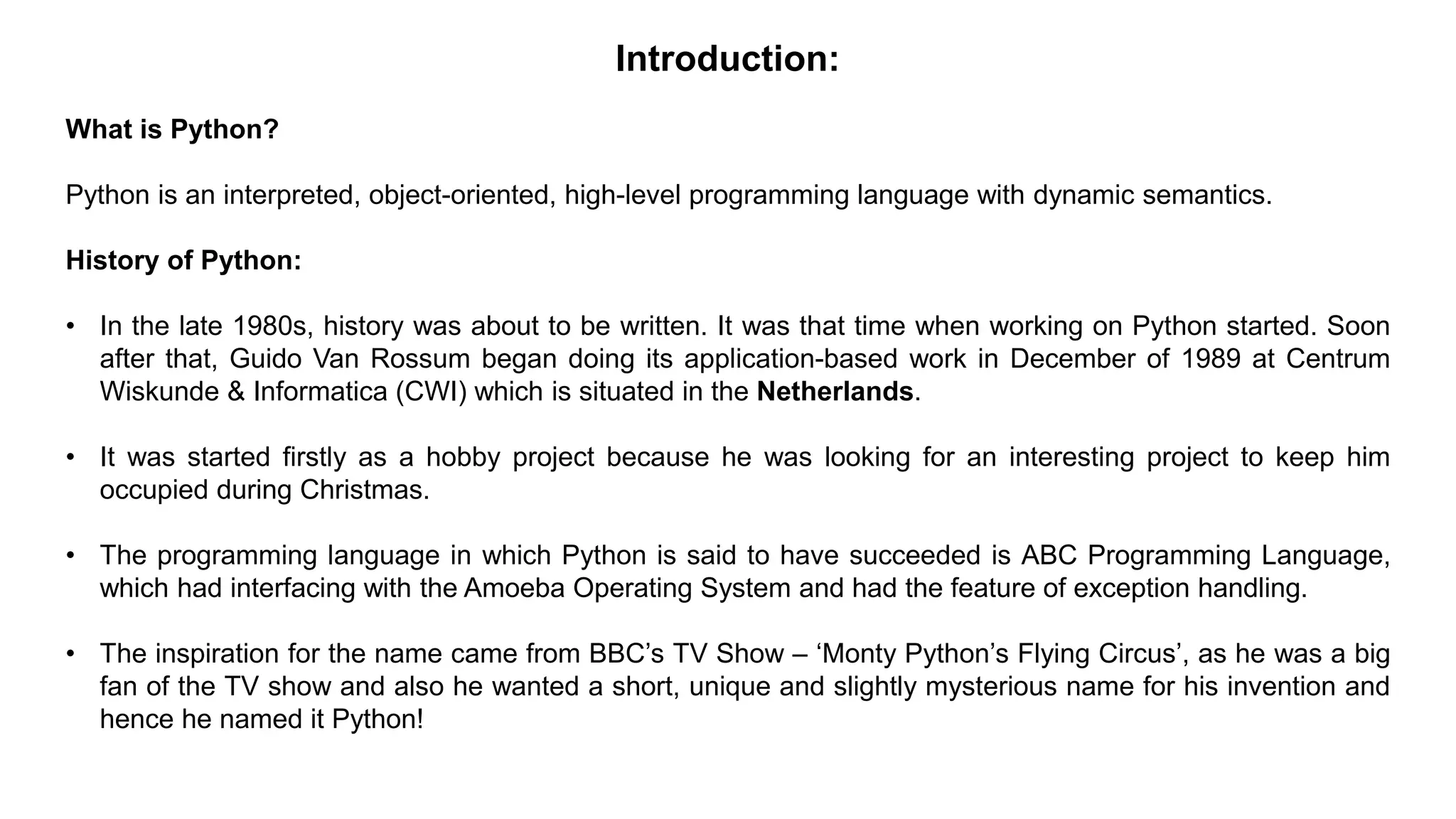
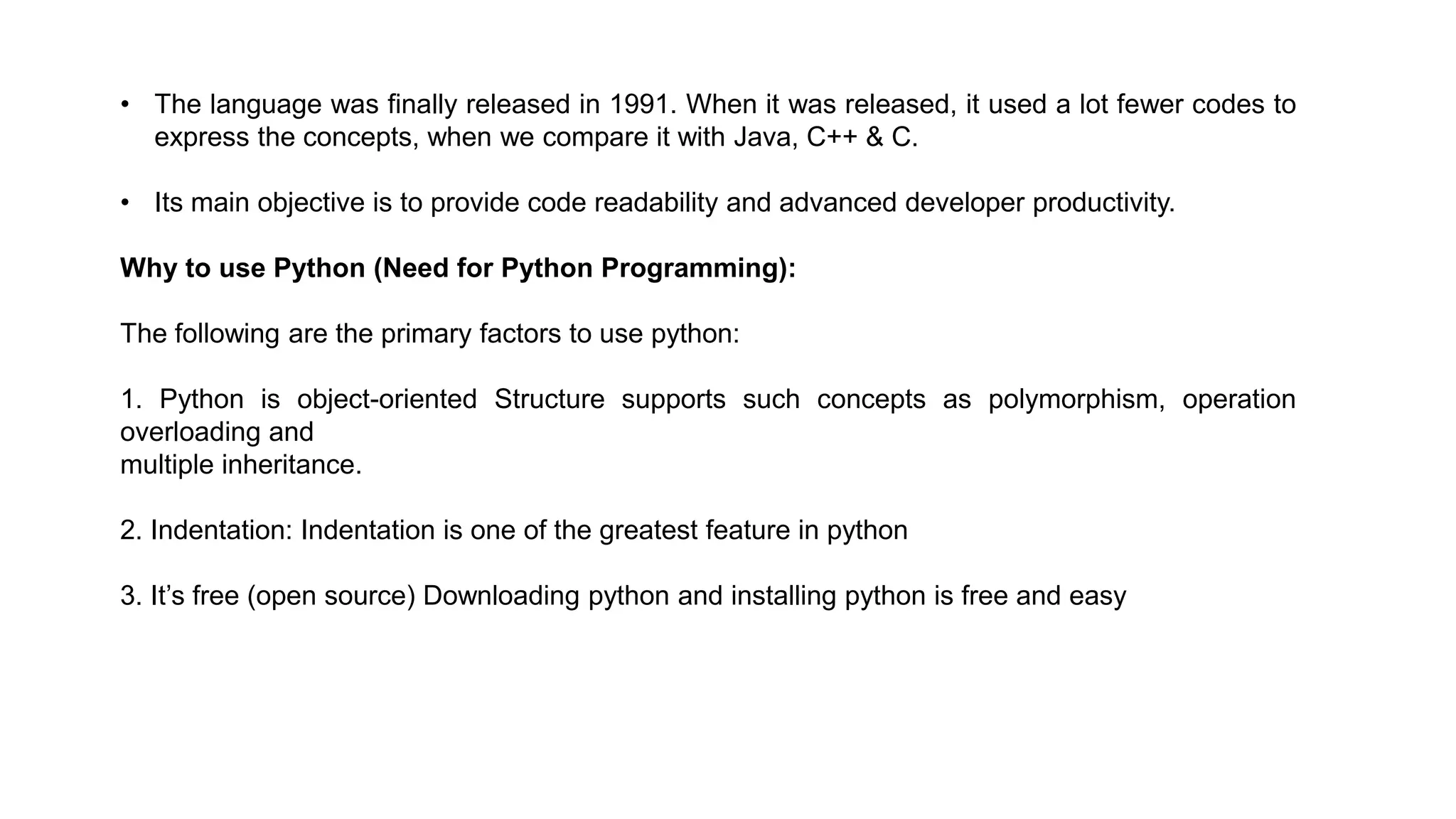
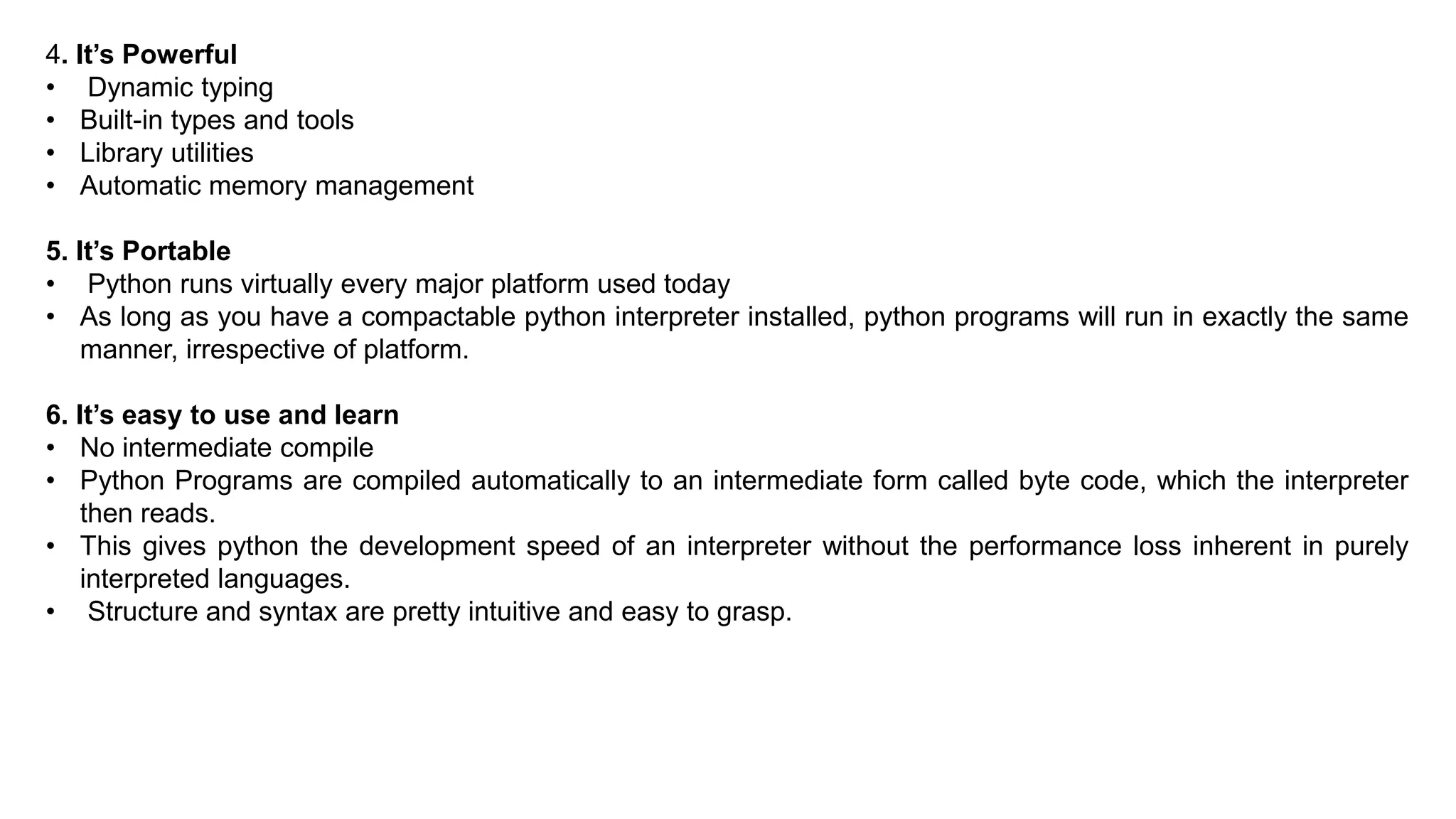
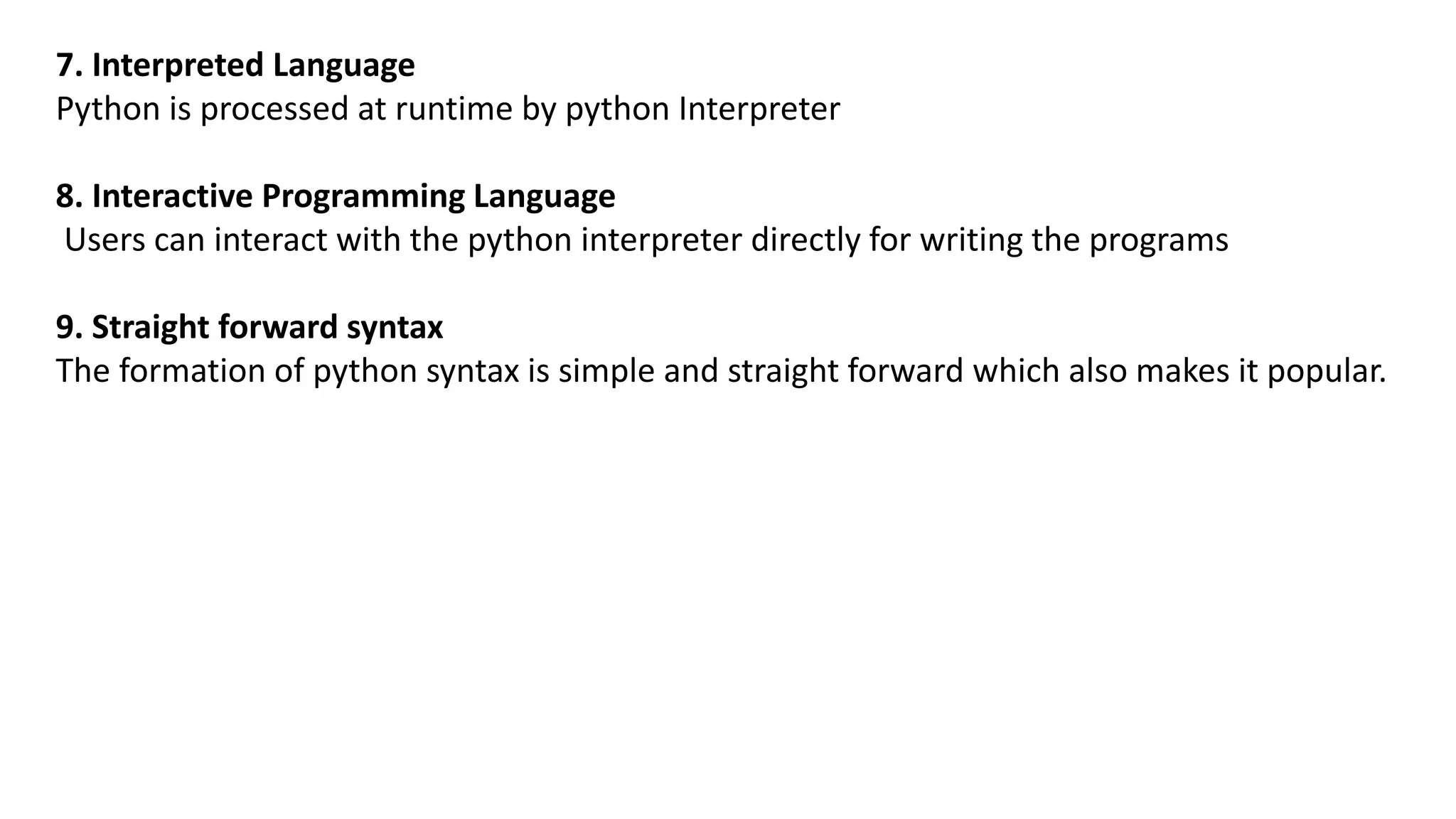
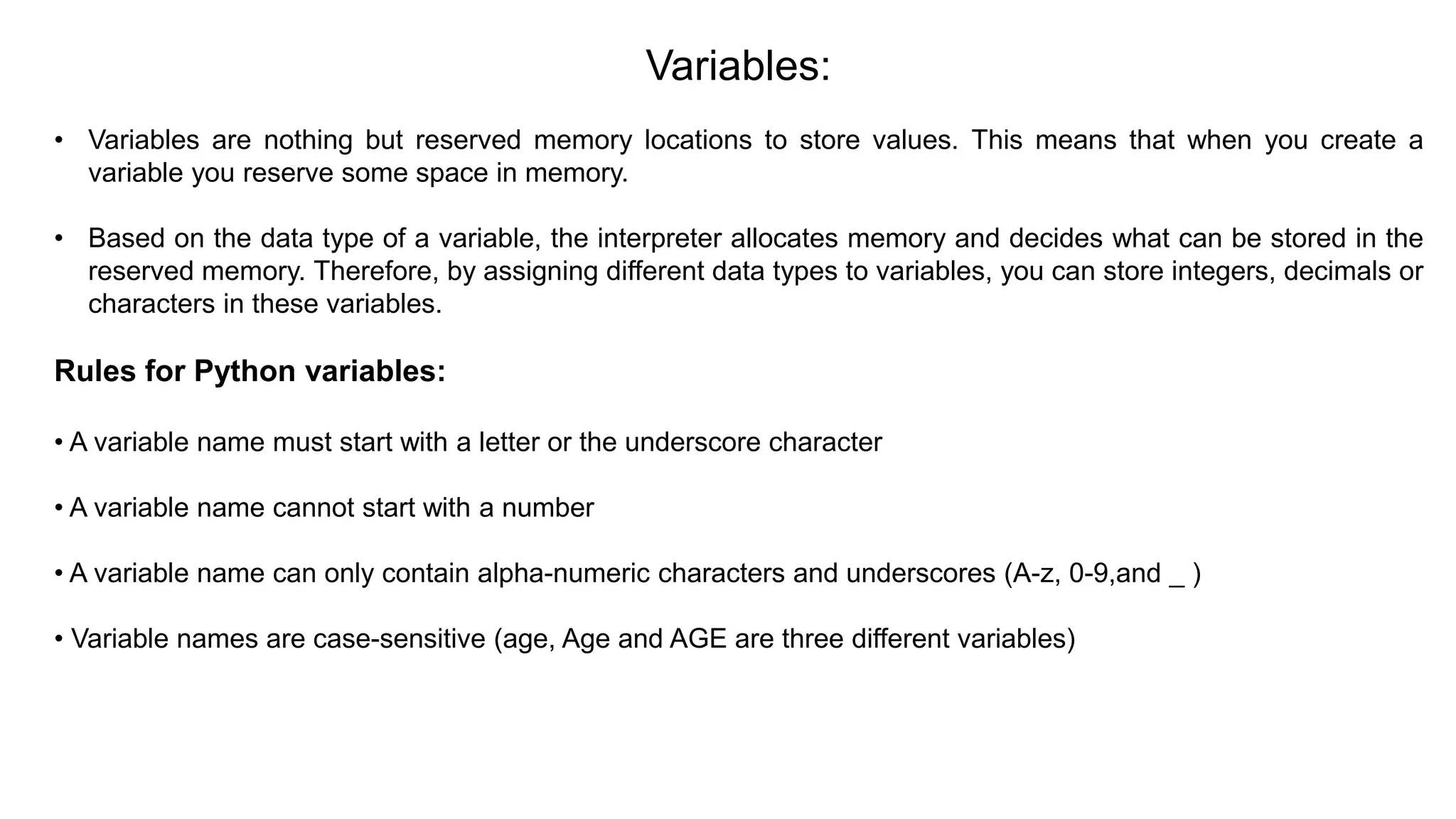
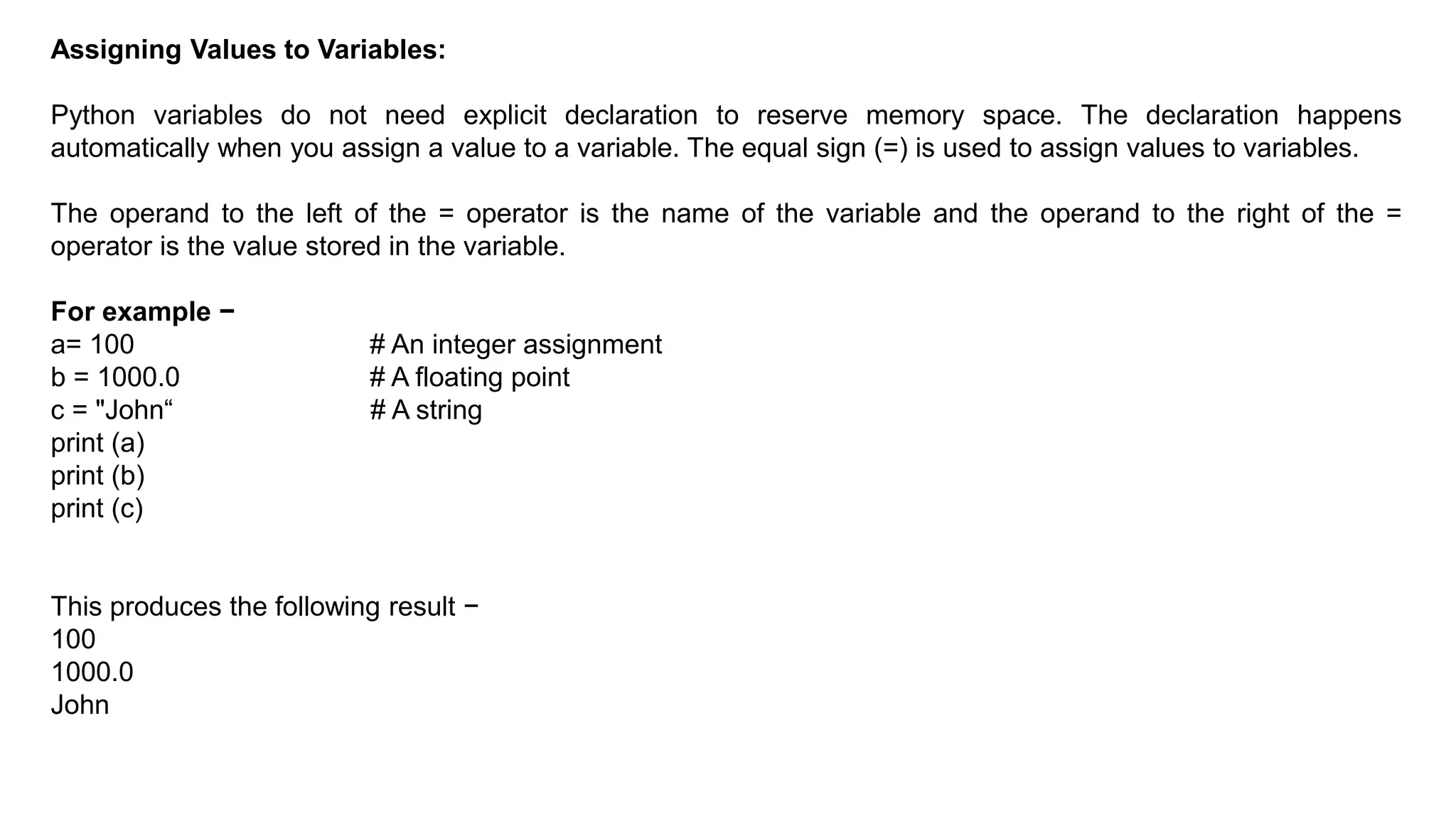

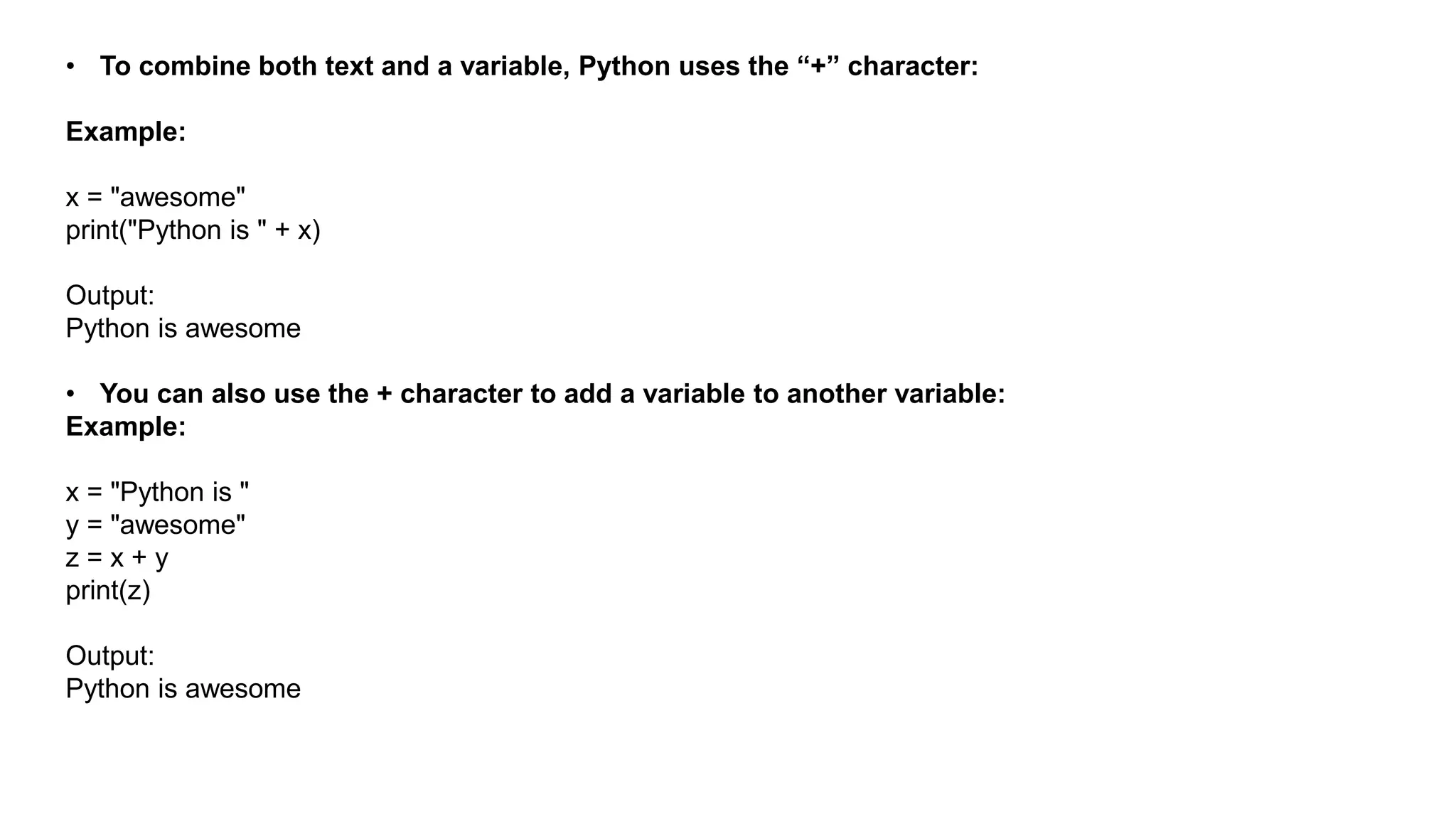

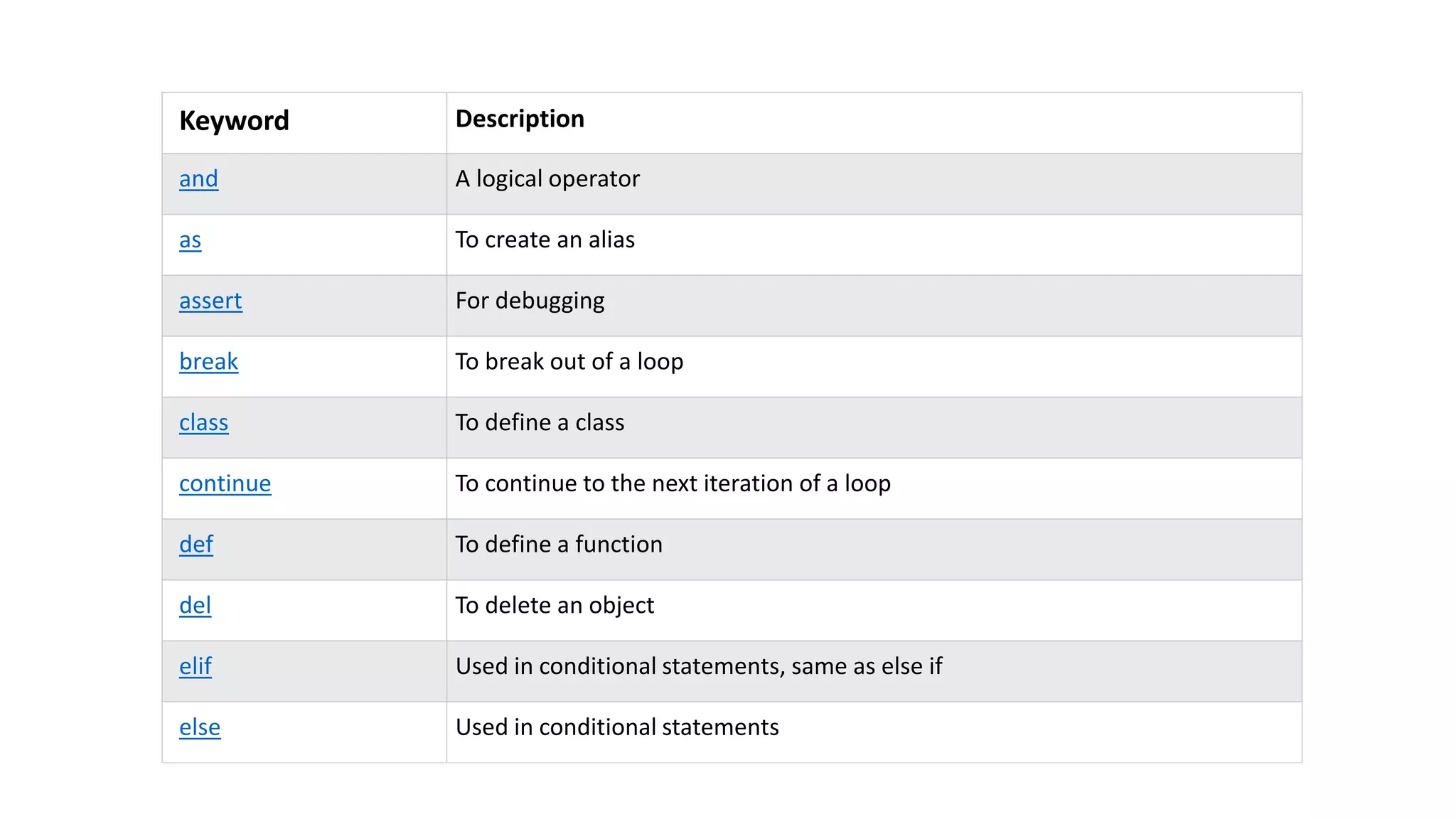
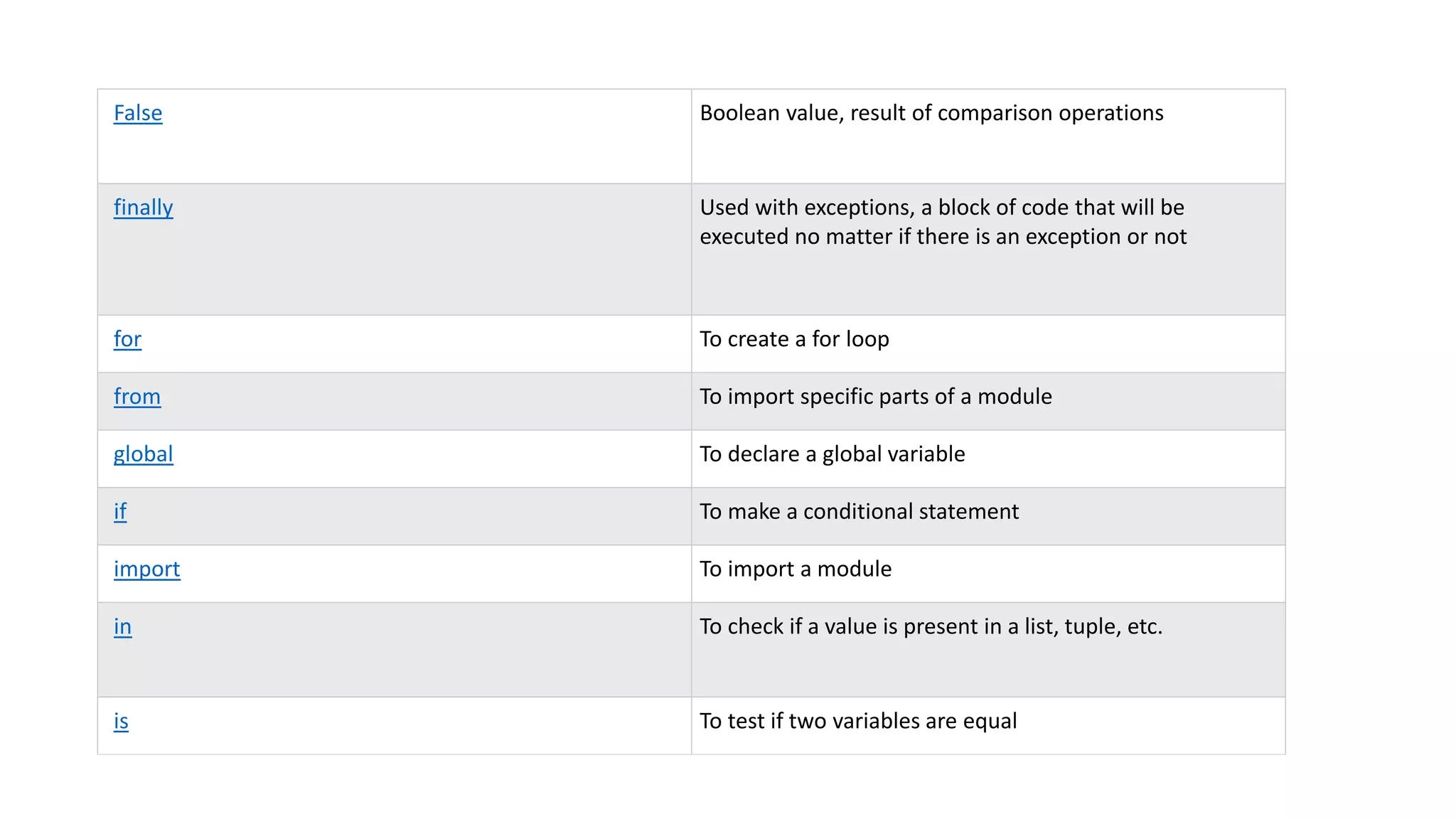
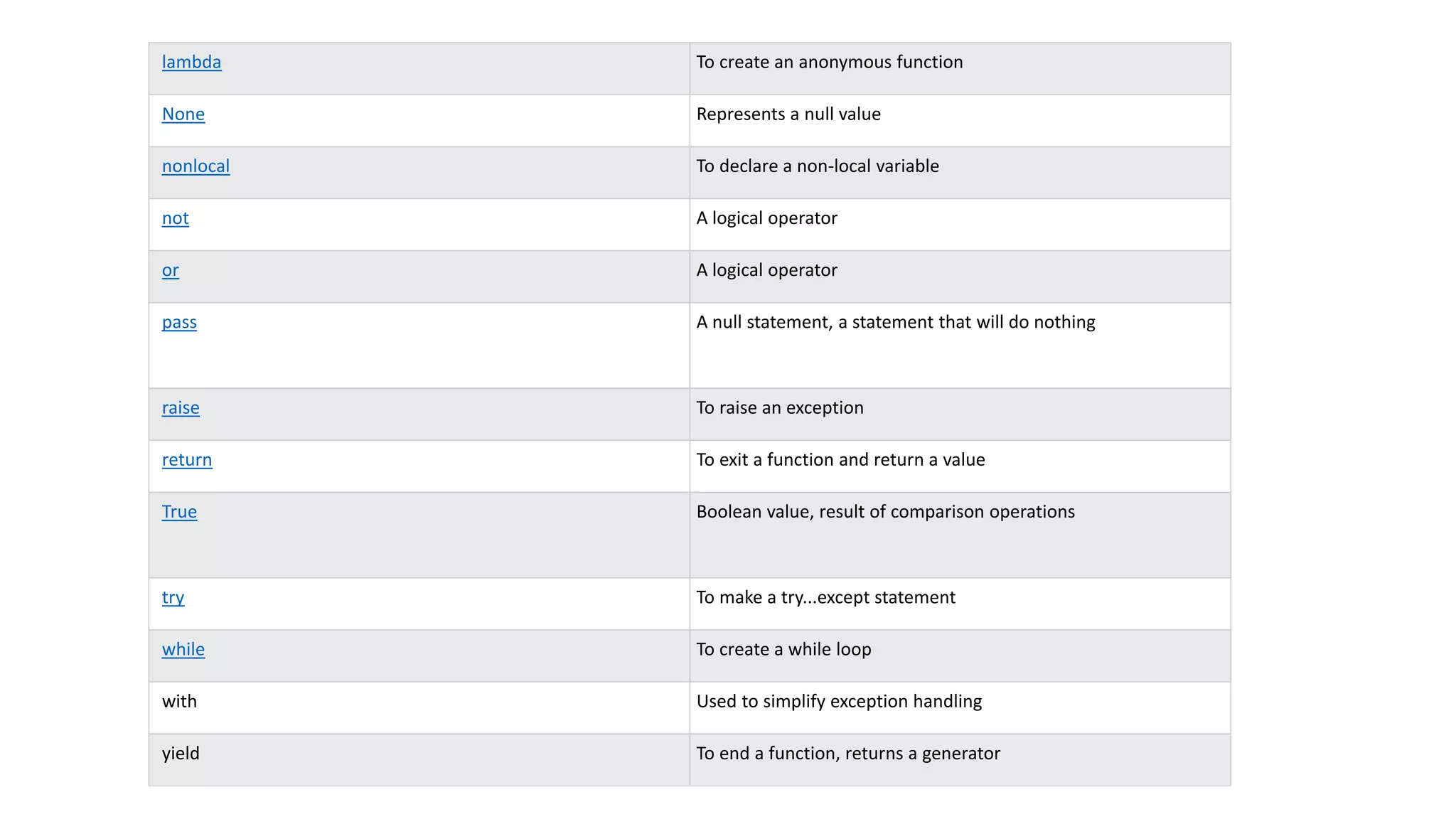
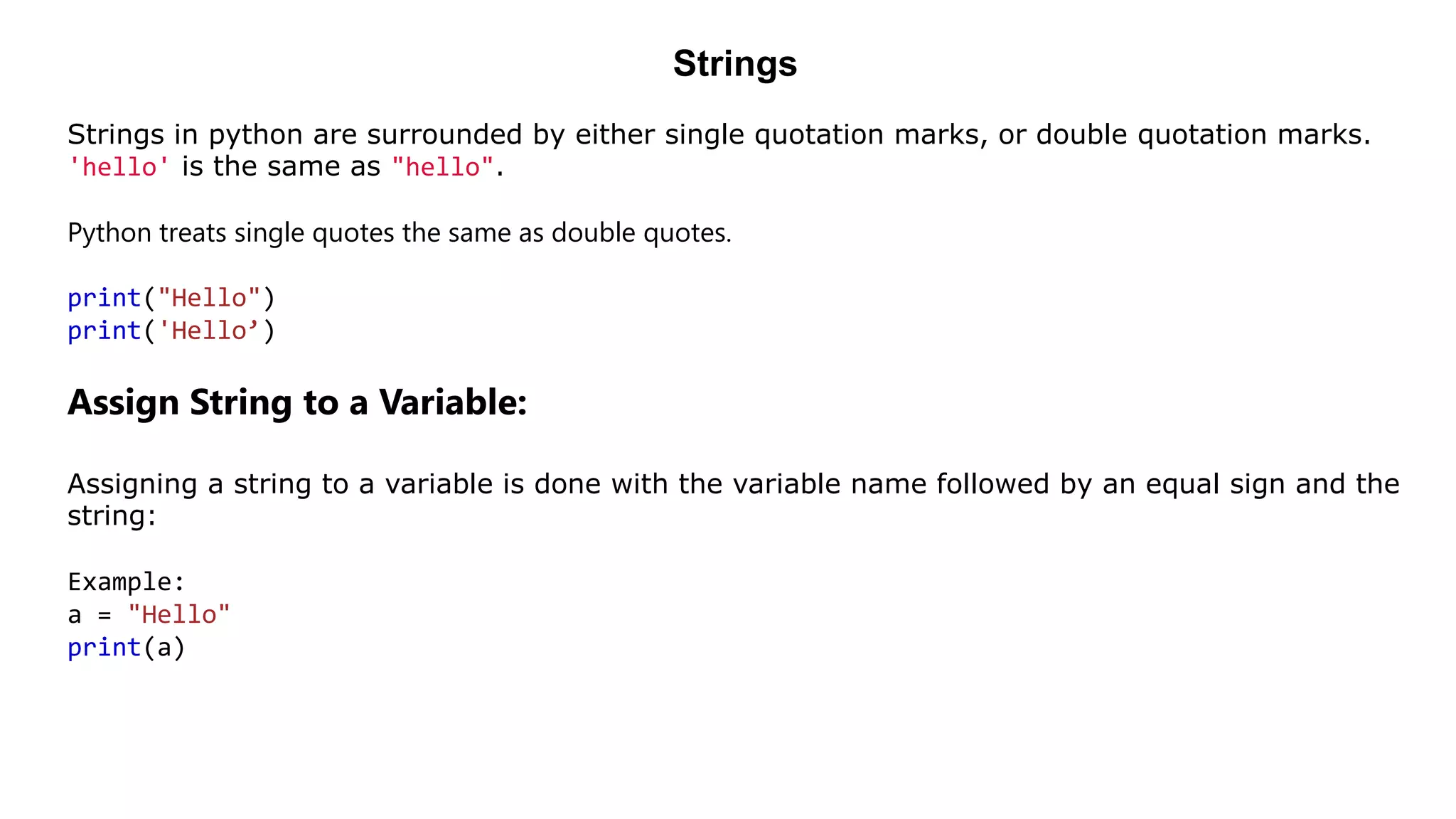
![Multiline Strings:
You can assign a multiline string to a variable by using three quotes:
a = """Lorem ipsum dolor sit a met, consectetur a dipiscing elit, sed do eiusmod tempor
in cididuntut labore et dolore magna aliqua."""
print(a)
Strings are Arrays:
Like many other popular programming languages, strings in Python are arrays of bytes
representing unicode characters.
Square brackets can be used to access elements of the string.
Example:
Get the character at position 1 (remember that the first character has the position 0):
a = "Hello, World!"
print(a[1])](https://image.slidesharecdn.com/unit-1cap-221129075653-32fb7635/75/Unit-1-CAP-pptx-15-2048.jpg)
